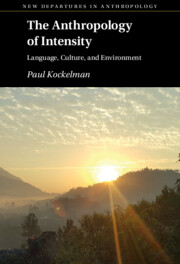Book contents
- The Anthropology of Intensity
- New Departures in Anthropology
- The Anthropology of Intensity
- Copyright page
- Dedication
- Contents
- Figures
- Tables
- Acknowledgments
- Abbreviations
- Introduction: Intensity
- Part I Grounds
- Part II Tensors
- Five Intensifiers
- Six The History of Mas
- Seven The Comparative Complex
- Eight Sentences and their Shadows
- Part III Thresholds
- Conclusion: The Ecological Self
- References
- Index
Six - The History of Mas
from Part II - Tensors
Published online by Cambridge University Press: 05 May 2022
- The Anthropology of Intensity
- New Departures in Anthropology
- The Anthropology of Intensity
- Copyright page
- Dedication
- Contents
- Figures
- Tables
- Acknowledgments
- Abbreviations
- Introduction: Intensity
- Part I Grounds
- Part II Tensors
- Five Intensifiers
- Six The History of Mas
- Seven The Comparative Complex
- Eight Sentences and their Shadows
- Part III Thresholds
- Conclusion: The Ecological Self
- References
- Index
Summary
Chapter 6 focuses on the role of mas (< Sp. más) in Q’eqchi’-Maya and the function of the modern comparative construction (long thought to be a calque of its Spanish equivalent). In contrast to previous analyses, it shows that Q’eqchi’ mas does not function as a comparative (like Spanish más), but rather as a degree modifier, indefinite quantity, and differential operator (like Spanish muy and mucho). It shows that the comparative construction does not require mas but only the positive form of gradable predicate, along with the adposition chiru (before, in the face of) to mark the standard. It shows that mas came into Q’eqchi’ during the late 1800s and seems to have functioned this way from the beginning. In addition, it offers reasons for this shift in meaning and its frequent misanalysis by linguists.
- Type
- Chapter
- Information
- The Anthropology of IntensityLanguage, Culture, and Environment, pp. 148 - 175Publisher: Cambridge University PressPrint publication year: 2022

